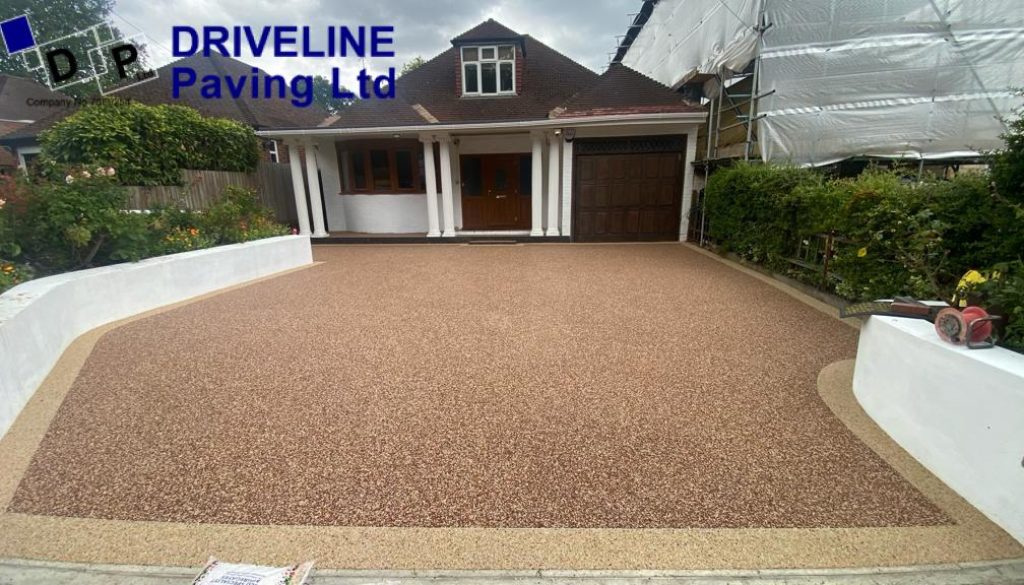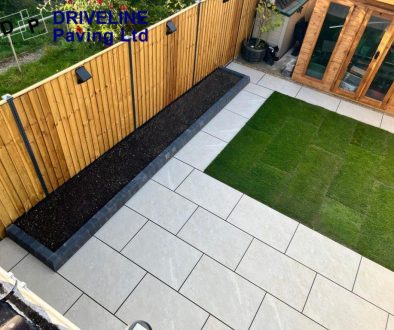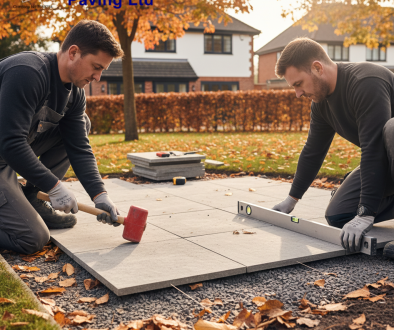Eco-Driveways: Recycled Aggregates and Low-Carbon Construction Tips
Sustainable home improvements are no longer a luxury—they’re becoming the standard. Eco-driveways, built using recycled aggregates and low-carbon techniques, allow homeowners to reduce their environmental impact without sacrificing durability or visual appeal. With UK regulations encouraging greener construction practices, opting for an environmentally responsible driveway is a smart choice for those planning upgrades in 2025 and beyond.
Whether you’re replacing an ageing surface or designing a new feature from scratch, there are now numerous ways to reduce the carbon footprint of your driveway. This guide explores how recycled materials and smart construction practices contribute to an eco-friendly installation—especially relevant for Essex property owners seeking both style and sustainability.
What Makes a Driveway “Eco”?
An eco-driveway uses design, materials and techniques that reduce environmental impact during construction and over the lifespan of the surface. Traditional driveways, especially those using concrete or non-porous tarmac, are often associated with high carbon emissions and poor water drainage.
Sustainable driveways aim to:
- Use recycled or repurposed materials wherever possible.
- Incorporate permeable surfaces that manage surface water naturally.
- Require minimal maintenance and long-term energy input.
Eco-driveways do not compromise performance. In fact, many recycled materials offer equal or better durability than virgin products, especially when properly installed with modern techniques. The environmental benefits extend beyond material choice—they also lie in responsible site preparation, low-emission machinery and designs that support biodiversity and water infiltration.
Benefits of Using Recycled Aggregates
Recycled aggregates are produced from crushed concrete, brick, stone or asphalt reclaimed from demolition and construction sites. Rather than sending this material to landfill, it’s cleaned, graded and repurposed for use as base or surface material in new construction.
The advantages include:
- Lower carbon footprint: Using recycled content drastically reduces embodied energy.
- Landfill diversion: Materials are reused instead of disposed of.
- Cost efficiency: Recycled options are often more affordable than quarried stone.
- Proven performance: Recycled concrete, when properly compacted, matches or exceeds virgin aggregate in strength and drainage.
These materials are particularly suited to driveway sub-bases, offering excellent load-bearing strength and permeability. Some resin-bound and porous block paving systems now incorporate recycled aggregates within the visible surface layer as well, making sustainability visible in the finished result.
Low-Carbon Construction Practices
Reducing emissions doesn’t stop at the materials. The installation method also plays a key role in lowering the carbon footprint of a new driveway. Professional services that prioritise sustainability focus on:
- Minimal excavation: Preserving soil structure and reducing fuel use.
- Use of low-emission equipment: Choosing machinery and plant with reduced CO₂ output.
- Efficient transport: Sourcing materials locally where possible to cut down on delivery emissions.
- Waste reduction: Reusing on-site materials (e.g. compacted hardcore) and separating waste streams for recycling.
Low-carbon construction also involves detailed planning to reduce unnecessary site visits, simplify logistics, and avoid over-ordering of materials.
Sustainable Material Options
There are several eco-conscious surface options available, many of which integrate recycled materials or are designed to support sustainable water management.
Popular sustainable choices include:
- Recycled crushed concrete: Ideal for sub-base use, with strong compaction and good drainage.
- Recycled brick: Adds a unique, rustic texture when used in decorative surfacing.
- Resin-bound surfaces: Combine recycled aggregates in a smooth, porous finish.
- Porous asphalt: Allows water to drain through, often laid over recycled sub-bases.
- Grass grid systems: Use recycled plastic or concrete grids to stabilise turf driveways.
These materials can be combined to create mixed-media designs that enhance visual interest while meeting environmental goals.

Design Considerations for Maximum Eco Impact
An environmentally responsible driveway is more than just material deep. Good design maximises function while reducing carbon impact and supporting local ecology.
Design features to consider include:
- Permeable layout: Encourages rainwater to soak into the ground rather than running off.
- Light-coloured materials: Reduce heat absorption and mitigate urban heat island effects.
- Planting strips or borders: Support pollinators and soften hard landscaping.
- Retention zones: Allow for temporary water storage in heavy rainfall.
Designing for longevity also matters. A well-laid eco-driveway with durable materials and smart drainage can last decades, avoiding frequent repairs that require new materials and transport.
What to Expect from an Expert, Low-Carbon Installation
An eco-friendly driveway installation starts with a comprehensive site survey and ends with a surface that is built to last. Trusted providers assess ground conditions, drainage requirements and design preferences to recommend sustainable options.
The installation typically includes:
- Excavation of the existing surface with low-emission plant.
- Laying of a recycled sub-base using materials like crushed concrete.
- Geotextile membranes to prevent weed growth and support structure.
- Application of permeable surface layers, such as resin-bound or block paving systems.
- Finishing with edge restraints and optional planting areas.
Professional services also offer clear documentation of materials used, waste handling practices, and aftercare tips to help clients maintain the green integrity of their driveway.
Maintenance Tips to Sustain Green Credentials
Once installed, maintaining your eco-driveway with environmentally considerate methods ensures that it stays sustainable throughout its life. Fortunately, these surfaces are typically low-maintenance.
Key tips include:
- Sweep regularly to remove debris and maintain porosity.
- Avoid harsh chemicals—use biodegradable cleaners where needed.
- Use manual tools or electric equipment rather than petrol-powered blowers.
- Top up joints or loose gravel using recycled material.
- Inspect during seasonal changes to address minor settlement or vegetation growth.
Scheduling inspections after winter or prolonged rain ensures early detection of any drainage or structural issues, allowing for low-impact repairs before major intervention is needed.
Build Green Without Compromise
Eco-driveways built with recycled aggregates and low-carbon practices offer the best of both worlds: long-lasting performance and genuine environmental benefit. With a wide range of attractive materials and design options available, going green no longer means compromising on style or durability.
If you’re ready to reduce your property’s environmental footprint while upgrading kerb appeal, visit our contact page to request a free, no-obligation quote from Essex’s trusted eco-driveway experts.





